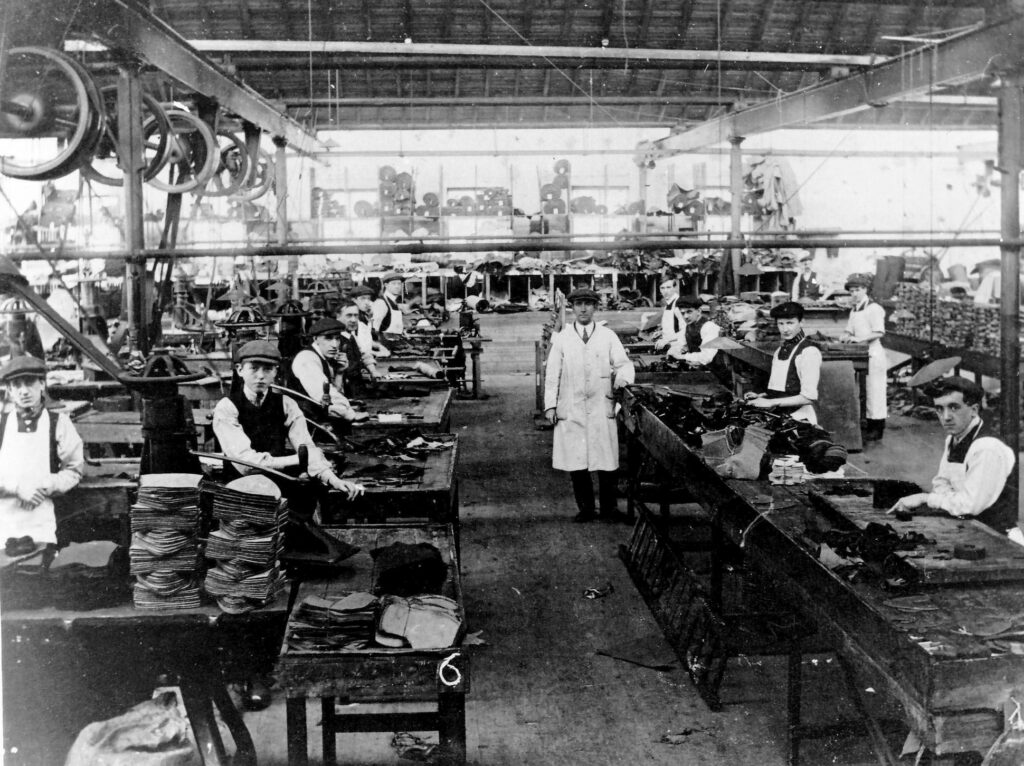The Rossendale Shoe and Slipper Industry is set to celebrate its 150th anniversary in November 2024. This historic industry was pioneered by John William Rothwell, a resident of Holts Buildings, Millar Barn Lane Waterfoot. In November of 1874, John, a married man, fulfilled his first order which consisted of six dozen pairs of slippers featuring a printed felt upper and a saddle felt sole. The purchaser of this initial order was Mr Thomas Field of Oak Street, Manchester, a remarkable one-armed man who operated a stall at Shudehill Market. This marked the beginning of what would become a thriving and longstanding tradition in the Rossendale region.
John, a skilled block printer, and his wife set out to create unique slippers from leftover felt materials sourced from John’s uncle, Mr Henry Rothwell, the proprietor of Bridge End Felt Works. This endeavour took root in 1861 when, during his employment at Myrtle Grove Mill, John noticed two tailors donning felt slippers, setting off a trend among the workers.
John’s innovative approach gained momentum over the years, and by 1875, he had expanded his operation to employ four young women, including two sisters. Remarkably, these women, identified as Mrs David Walmsley, Mrs Henry Coupe, Mrs Milton Mitchell, and Miss Martha Maxwell, were still thriving in 1920, attesting to the enduring success of John’s venture. John Willam’s journey in the slipper-making industry was marked by collaborations and changes. In recognizing the market demand for quality slippers, he partnered with block printers Ormerod Clegg and William Spencer to form Spencer Glegg and Company. However, after losing his felt supply following Henry Rothwell’s departure from Bridge End, John William established a new partnership with James Gregory under Gregory and Company in 1879.
Despite these setbacks, his resilience led him to join Mitchell Brothers as a manager in 1882, continuing his involvement in the slipper manufacturing sector. John Willam’s ability to adapt to changing circumstances and forge new partnerships showcases his commitment to the industry’s growth and development.In 1876, Millar Barn Lane was not only the residence of Samuel McLerie, a foreman fulling miller who worked for Henry Rothwell, the uncle of John at Bridge End. Samuel was engaged in making slippers in his home until he eventually acquired premises at Holt Mill in Waterfoot. Later, he made a move to Grove Mill in Bacup in 1899.
After John William Rothwell departed from the firm of Gregory and Company, a young man named Henry Whittaker Trickett assumed the role of a travelling salesman. By 1883, Henry had established his own manufacturing company in Carr Lane, Waterfoot. Six years later, he purchased Gaghills Mill, and by 1900, his workforce had grown to over a thousand employees.
The firms in which John William played a part were:
Sir H W Trickett Ltd Gaghills, JH Hirst Whitewell Works, Hoyle Hoyle and Company Ilex Mill, Joshua Trickett Limited Greenbridge, Rawtenstall Shoe and Slipper Company Olive Mill Bacup, W Hardman and Company, Union Works Waterfoot. Newchurch Boot Company, Globe Works, J R Brooks Piercy, J H Haworth and Company, Warth Mill, Hartley and Company, Bacup; Lambert Howarth and Company, Whitewell Bottom, W Birtwistle and Sons, Stacksteads, Spencer and Johnson, Millar Barn Lane; J H Parker, Bury, Eatough’s Earl Shilton, Leicestershire, Skelmersdale Shoe Company, Ashworth’s Limited, Bury and Lord and Sharman, Pemberton.

